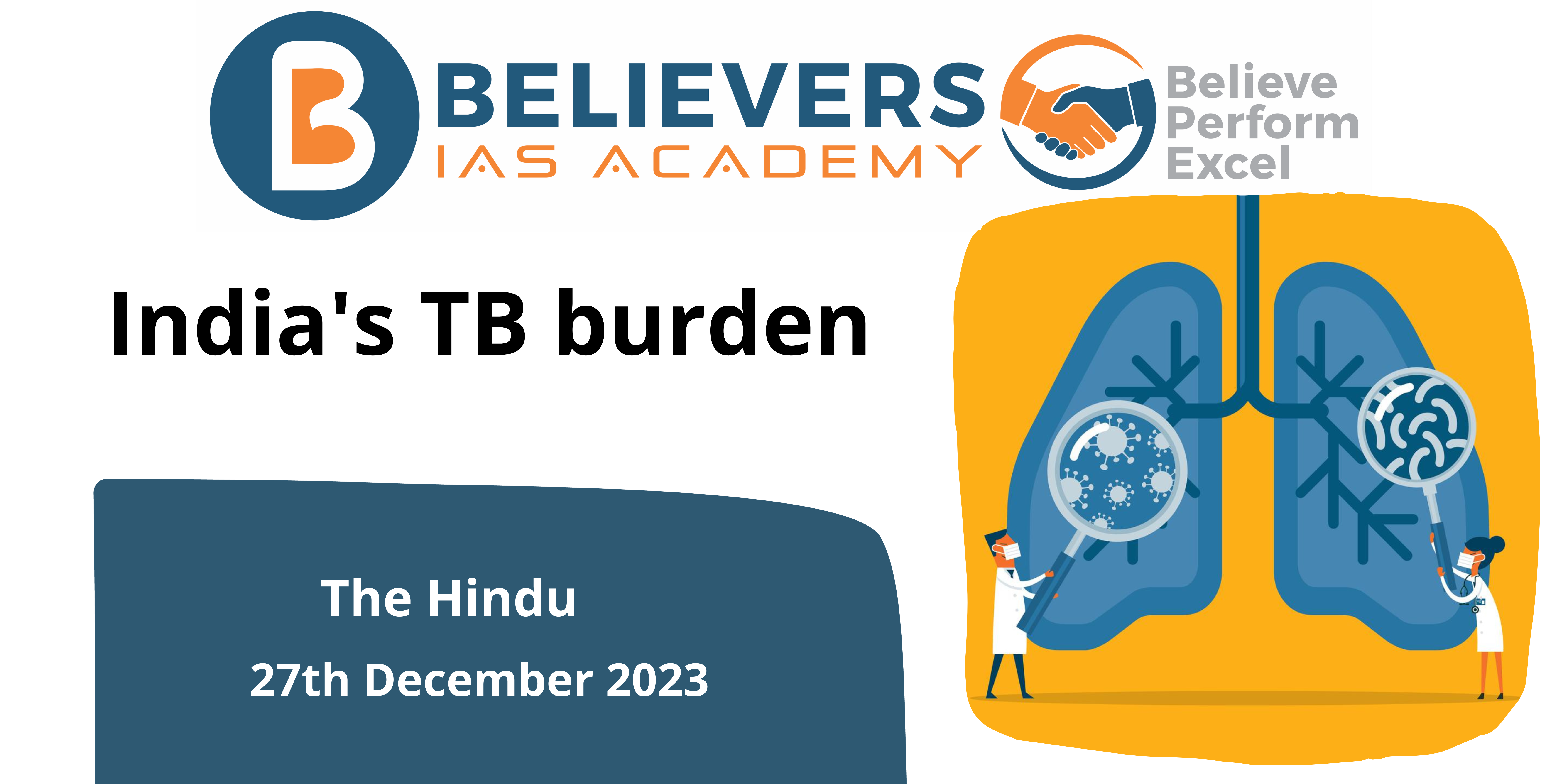India’s TB burden
Context:
Recent studies suggest shorter-duration treatment approaches, showing effectiveness in both adults and children as opposed to long and difficult medication regimens to treat TB. It is important for the country to adopt these innovative treatments to enhance TB management.
Relevance:
GS-02 (Health, Government policies and interventions)
Background:
- Tuberculosis (TB), a menacing global health concern, claims over 27% of TB cases worldwide.
- Over the last decade, the National Tuberculosis Elimination Programme (NTEP) has made strides, treating millions. However, the COVID-19 pandemic and the persistent issue of drug-resistant TB threaten to undermine these gains. Children, in particular, face hurdles in adhering to the treatment regimen due to its duration and challenges posed by the medication.
Key highlights:
- TB Burden in India: India shoulders 27% of the global TB burden, making it the highest contributor to TB cases worldwide.
- Challenges in TB Treatment: TB treatment, although effective, poses challenges due to its duration and the nature of the medication. Children face additional challenges in adhering to treatment, given the fixed drug regimen recommended by the NTEP, coupled with the tablet’s size and taste.
- Treatment Duration Reduction: Worldwide initiatives aim to simplify TB medication, including studies exploring new drug combinations. Recent studies, including the SHINE trial with 1,200 children from four countries, demonstrate the feasibility of reducing the treatment duration from six months to four months for both adults and children.
- WHO Recommendations: The World Health Organization includes the study results in its TB treatment guidelines, endorsing shorter treatment durations. Despite global recognition, India is yet to adopt the revised guidelines for a shorter TB treatment duration.
- TB Elimination Goals: India aims to eliminate TB by 2025, aligning with the global vision of eradicating the disease by 2030. To accelerate this fight and move towards a ‘TB Free’ India, active screening, case detection, and the adoption of new guidelines for shorter TB treatment are imperative.
Tuberculosis:
- TB, caused by Mycobacterium tuberculosis, is a treatable and curable disease with a long history dating back to 3000 BC in Egypt.
- Spread through the air when infected individuals cough or sneeze, TB commonly affects the lungs but can also impact other organs.
- MultiDrug Resistant Tuberculosis (MDR-TB) and Extensively Drug Resistant Tuberculosis (XDR-TB) pose significant health threats.
- The BCG vaccine, developed in 1921, plays a crucial role in TB prevention. Initially introduced in India in 1948, BCG became part of the National TB Control Programme in 1962.
- Besides TB protection, the vaccine safeguards against respiratory infections, mycobacterial diseases, and serves as immunotherapy for certain cancers.
- Interestingly, BCG’s efficacy varies geographically, demonstrating higher efficiency in countries farther from the equator.



